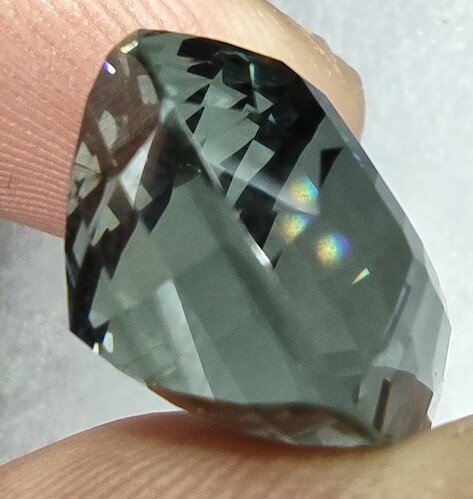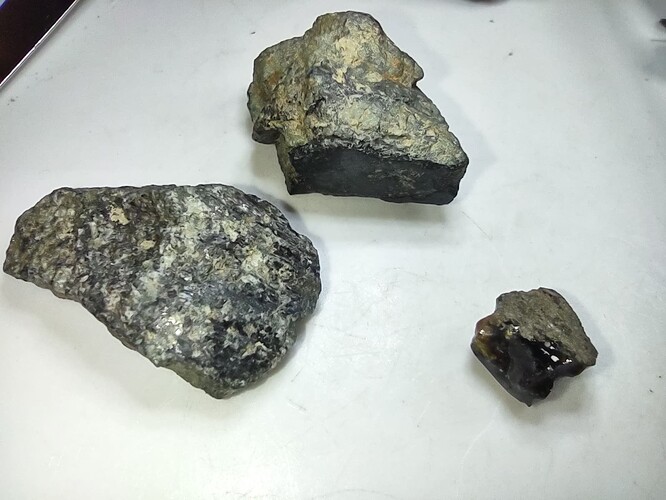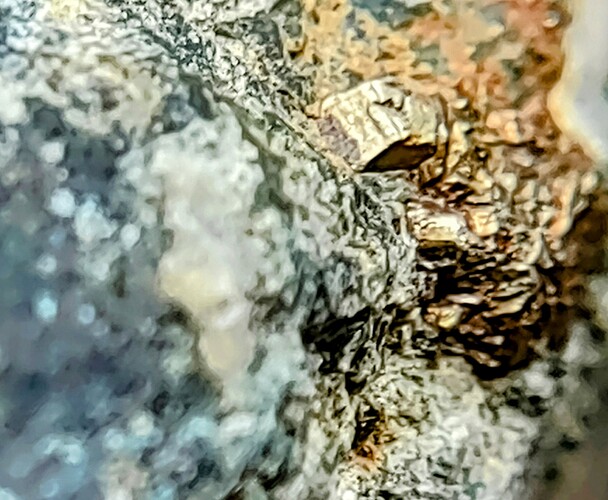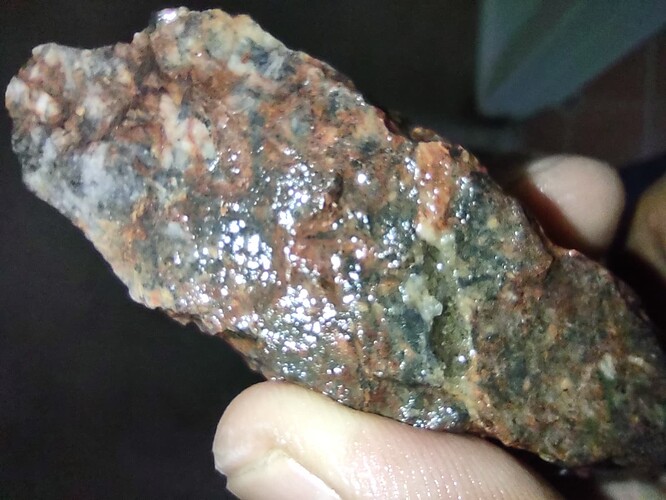Hi Scott. Sunstone is usually the common name for a feldspar with hematite crystal inclusions. It is not fully transparent and therefore often cut as cabochons. If you know the source of your rough the local gem and lapidary Club should be able to provide the required details as well as the identity. If it is a new find by you, you’re very lucky and should stake your claim as soon as possible!
Hi Ivan, thanks again for your help.
Is there a way to know for sure if this is a new find? I’m waiting for ICP-MS results and wondering what I can do with that, or the other analysis info I have on these to prove that they are natural and come from a new location.
I’ve been told to start selling it, but I can’t really do that before I know what it is. I can’t tell what is a fair price.
Started an online business to sell them, then was told I need to start a mining company, to get a geologist to help identify and package/ship on site. So I started a mining company, claimed the area and am hoping to buy it. However, I don’t have enough money to do all of this and can’t even convince family, let alone any investors, that this is worth mining, as I’ve been told repeatedly that it is.
Where in the world can a new mineral, or gemstone be tested and confirmed? I’ve tried GIA, universities, labs, jewelers, on-line forums, and several geologists.
First things first. Have you got a legitimate claim over the deposit? I’m in Australia so don’t know your mineral/mining legal system. Iolite is not a well-known gemstone so I appreciate your difficulty in interesting people in bank rolling your claim. You appear to have iolite so I am surprised your geologists have not confirmed that. The question is how much is there, and how much is gem quality material? Other questions are: How difficult is it to mine and what is the current price of rough iolite? Also, what is the landowner’s stake in your claim? Is he expecting and asking too much? These are questions that are really outside of this forum and I think you are expecting too much from it.
Hi Scott. gem Iolite generally comes from Brazil. Some came from Australia thirty years ago but the deposit is exhausted. It is a pretty stone and harder than tanzanite which is currently a lot more fashionable and a more showy purple despite the fact it is a result of heat treatment, which doesn’t apply to iolite. If you’re a gem purist, that’s the distorted jewellery market in action.
I realized I hadn’t posted a pic of the green it displays. Iolite seems most likely, I hadn’t seen any of the ones that show green and think that’s why I had a tough time believing that at first. Thank you all for everything.
If you have “Spent YEARS trying to get this identified” . Why did you not take it to a registered gemologist ? $50.00 against, not knowing. Good or bad, worth something or not. At least you would know. Please don’t get me wrong. I have several stones that I am not SURE what they are. as I can afford it, I send them off to be tested and if worth it, certified.
Just my opinion.
An interesting thread. Back to basics fellas. This specimen can be identified with standard gemological instruments. It is not dense enough to be Iolite (SG max of Iolite is 2.66); the SG measurement stated was SG=2.77 The next more dense stone that is Trichroic is Scapolite (SG max for Scapolite is 2.78 {checks in range}). Easy separation now between Iolite and Scapolite … Iolite is Inert to UV long and short; Scapolite will strongly fluoresce pink, yellow, or orange under UV long and be dimmer under UV short. A more technical separation can be done with a standard critical angle refractometer and or with a standard polariscope with conoscope by determining the SIGN of the stone. Both stones are DR since they are pleochroic, but the SIGN of Iolite is BIAXIAL negative or positive and the SIGN of Scapolite is UNIAXIAL negative. My impression from the photos and the SG stated is Scapolite. Let us know if it is fluorescent. Hope that helps. ![]()
Sunstone is not pleochroic nor trichroic.
Thanks again Michael. I think Scapolite is likely what it is. I had been thinking something like a Riesling, color changing beryl, or eudialyte but am realizing this stone is fluorescent (a pale green color) and seems to be tenebrescent also. Both of which are also seen in Scapolites. I think the problem with getting it certified as anything known, is that it comes from a new source and therefore is tough for anyone to certify as anything known. I think this is the point I’m at even with very likely accurate identification. Will ICP-OES-MS help us know for sure? I’ve been told to do MS, TEMS, RAMAN and another test, but am still unsure how to prove anything conclusively.
Hello … with your observation of pale green fluorescence you have ruled out Iolite!
You have also ruled out Scapolite as it does not fluoresce green.
However there are no natural stones that are trichroic that fluoresce green.
There is one natural stone that is DICHROIC and fluoresces green and it just happens to match all your other parameters (Ordinary Ray RI of 1.54 and SG on the high end of 2.77) and that is quartz. With all those Conchoidal fractures covering your rough specimen photo … you have a Quartz. Synthetic quartz is bluish due to cobalt as the chromophore, so that explains the slightly higher density. Rotate your stone on your refractometer and see if the extraordinary ray increases the RI reading to 1.55. My impression now is that you have a man made synthetic quartz. ;))) Is it VVS or Flawless internally as well? ;)))
If you have the ICP-MS results that should clinch the identification. Be aware that such analyses highlight impurity levels at parts per million and what you are looking for are the main elements present in %wt figures, such as provided by mining labs and not academic labs. Nevertheless, such impurity profiles are usefull for establishing provenance ie the source of the gemstone, as different deposits have different geochemical “fingerprints”.
These images are of the same, or similar material, from the same location. Some of this is not gem quality and some is, but I’m nearly certain they’re the similar material(s). The inclusion in the cut stone, which I believe is the same as the top layer of this multi-colored piece, looks natural and I was told the rough I had faceted is natural by a geochemical lab after SEM of the blue and aqua regia of the orange/brown material. Will be finding out results of ICP-MS next week.
Hello Scott. I’m sure the analysis will reveal all. The major point is whether you have adequate amounts of facetable material. Despite identification, you can call it Scottstone if you want to. What matters is getting it into the market for rough, unless you want to spend heaps getting it cut for display stones or the cut stone market. Depending on the market you’re aiming for I suggest cutting firms in Thailand or China for small stuff such as earring stones. Larger stones at or above 3 carats are best cut by guys you trust in the USA, but it will cost you, and only worthwhile if you know current wholesale prices. I hope this helps.
Thanks again for all your help. This is a great service that you provide and it’s an amazing educational opportunity for people like me. I’ll keep you updated on the Mass spec results but don’t have them back yet. The rough waiting to be faceted will take some time.
I have very little of the blue/green aside from the piece that was faceted. I also have off-cuts and some rare samples of my ancestors. I’d be happy to sell some of the rough but am having trouble valuing it. If anyone is interested maybe they can contact me through WhatsApp at 1-925-586-4883, or by email at ebgems22@gmail.com. I’m doing business as Western States Mining Co now but still working on a website. Otherwise ready for business, if anyone’s interested, please let me know.
Scott
Hi Scott. My "service " is part of being in the gem loving/ digging fraternity. I’m glad my comment was useful. Please don’t agonise too much about the value of what you have, although I empathise with you about the effort and cost you have endured.
If it’s quality and people like your material, just get it into the marketplace. You may have to discount to do so. However, you appear to be getting the information base that can justify the prices you can charge when your gem material gets known to faceters and jewellers.
I’m now heading 1600 kilometers north to do my own digging and I wish you luck!
Thanks Ivan, I hope you’re digging is going well. Can’t say enough about this forum, you’re all a huge help.
Recently found the crystalline form of what I think is the same material as the free-form rough stones I’ve been finding in the area, displaying areas of all the same colors. It should be the proof needed to show this is natural and occuring with gold. Was told SEM showed gold, but he wasn’t sure if it was in, or on it.
Is this grandidierite, ominelite, gem silica, cryptocrystalline quartz, or something new?
Come visit at www.ebgemshop.com and see what we have!
Hi Scott. Thanks for your info. The gold is presumably a consequence of silica infiltration into your other minerals. Cheers. Ivan.
PS. My digging gave a few more zircon and other samples for analysis, I hope to get my main research paper out soon to follow the one in Mineralogical Record 2019.
Hi again, I just wanted to give an update that I don’t really have much new info as MS results were similar to SEM and XRF results. An inclusion in a very small piece of the same material and the last few pieces I posted pics of make me certain that this isn’t synthetic and other samples make me certain opal is a possibility. Can anyone tell whether or not that’s likely? The blue material next to the gold doesn’t look like opal though and made me think grandidierite. Are either of those likely possibilities?
Thanks again Ivan, I hope everything goes well with the zircon analysis and paper! Glad to have people like you on this forum to help people like me!
Scott / Michael (@mhutton),
The images of the cut stone from Apr 3rd seems to show a significant window in-line with the table. Would that influence the RI measurement? Still learning how to use the Refractometer, so I am not sure if this is a valid question.
Michael mentioned measuring RI using a critical angle refractometer and Polariscope. Is the CA refractometer a different instrument from the standard semi-hemispherical prism? Just trying to understand the terminology.
Thanks!
Troy








